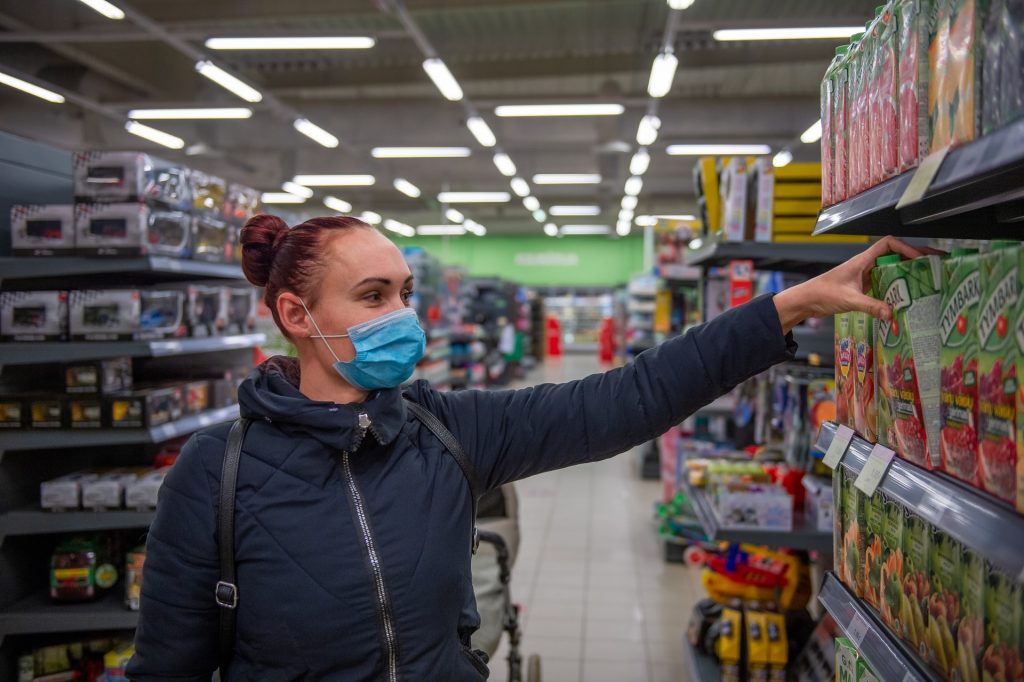Undoubtedly, UK food retailers are undergoing a step-change in nearly every aspect of their businesses. Their customers are shifting, technology is evolving, new competitors are entering the market and of course, there is Brexit. The most rapid growth in the Food Retail industry has been in the limited assortment or smaller format stores. COVID-19 has not only accelerated the conversion of new online shoppers, but it has convinced a large majority to continue to purchase local farm produce online. This has substantially boosted the amount of food and essentials sold online.
How Food Retail Has Grown
The Institute of Grocery Distribution (IGD) has released pandemic-adjusted forecasts for the UK food retail market. It reckons a 10% increase from 2019 to 2022 on the cards. That’s a shift of £19.1 billion to a total of £211 billion.
In the past, growth in this sector has been swallowed up by the giants. So, if your business is on the smaller end of the scale, you could be cautious about celebrating.
But don’t worry, the good news is that the pandemic hasn’t just contributed to the growth of the market; it’s transformed it.
Let’s take a look at the ways small retailers can get their share of the trolley, shall we?
The switch to online has been accelerated
Before COVID, online grocery was tipped to grow 52% in the next five years. Unsurprisingly, the pandemic accelerated this, with global Google searches for “food delivery” reaching peak popularity in April.
Big online grocery retailers like Ocado and Amazon Fresh were oversubscribed. So, smaller, and nimble, local suppliers were able to step in and close the gap. The IGD expects this customer base to remain loyal post-pandemic.
Forecasts are that online market shares will rise from 6.2% in 2019 to 8.9% in 2022; that’s £1 in every £11 spent on groceries. This increase would make it the fastest-growing channel in 2020, overtaking hypermarkets in value.
Farm retail has grown significantly
In Britain, less than half of our produce is grown locally. And supermarkets only have a day’s storage capacity. So when international trade halted, consumers turned to local growers. Now the United Kingdom’s farm shop turnover is more than £1.5 billion.
Vegetable box deliveries doubled in two months, with thousands on waiting lists. And 92% of farm retailers report a substantial amount of new customers since March. A shift Mike Watkins, Nielsen’s UK Head of Retailer and Business Insight, says is significant and likely to continue.
Discount is set to grow
The IGD predicts discount market share will overtake online as the fastest grower in 2021 and 2022. This is due to sustained and rising unemployment.
Discounters Aldi and Lidl will continue to expand with their smaller format stores. Also, variety discounters like B&M and Home Bargains plan to increase their grocery offerings.
Forecasts are that the channel will contribute 14.6% of total grocery spend in the UK by 2022; meaning a growth of 25.4%. And Mike Hancox, CEO of courier company Yodel, tells us that soon for the first time, we’ll see some of the biggest discounters online.
Convenience will grow moderately
Convenience foods rose in popularity during the lockdown. Although, predictions project that sales will moderate partly due to the increased interest in cooking “from scratch” and because of price sensitivity.
However, Simon Wainwright of IGD sees potential for stores as “destinations” once city centre trading revives.
Opportunity knocks locally
The lockdown panic-buying surge in supermarket turnover is a thing of the past. Consumers are avoiding crowded stores in favour of deliveries or click-and-collect. They are also choosing to shop locally at small shops . They’re happy to exchange variety for less time exposed to strangers.
With more time at home, people are thinking more consciously about the food they eat. They want to know where and how it’s grown. They’re focused on healthy, plant-based eating, and cooking from scratch.
Smaller retailers should be encouraged to respond to these changing consumer habits.




